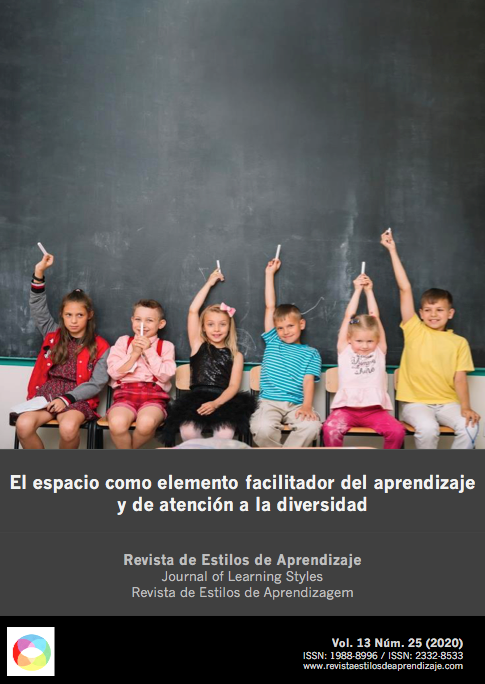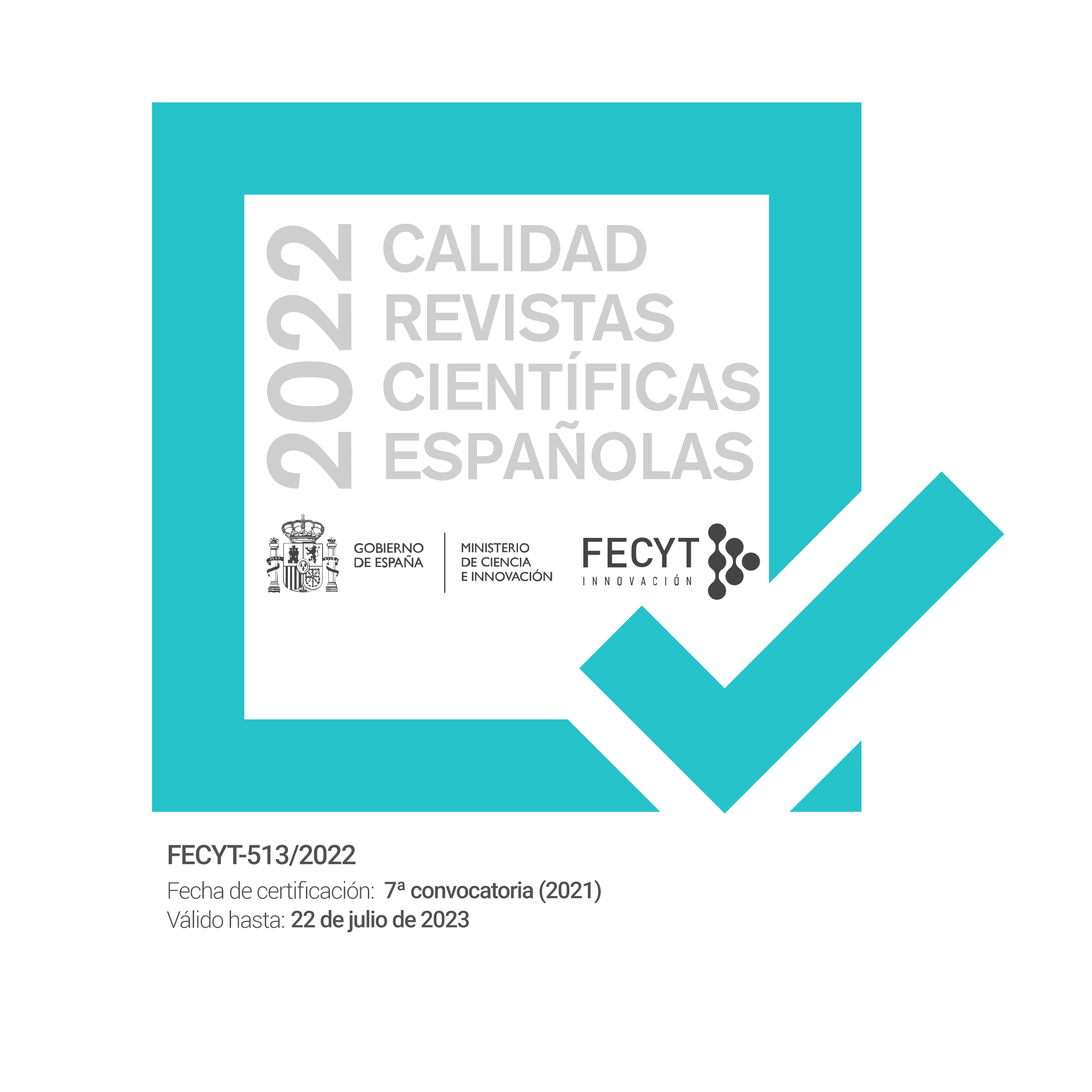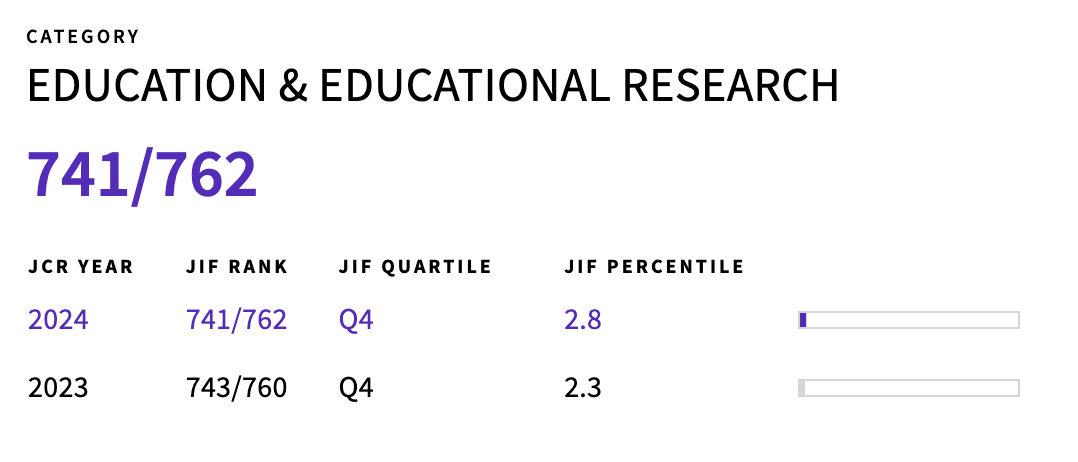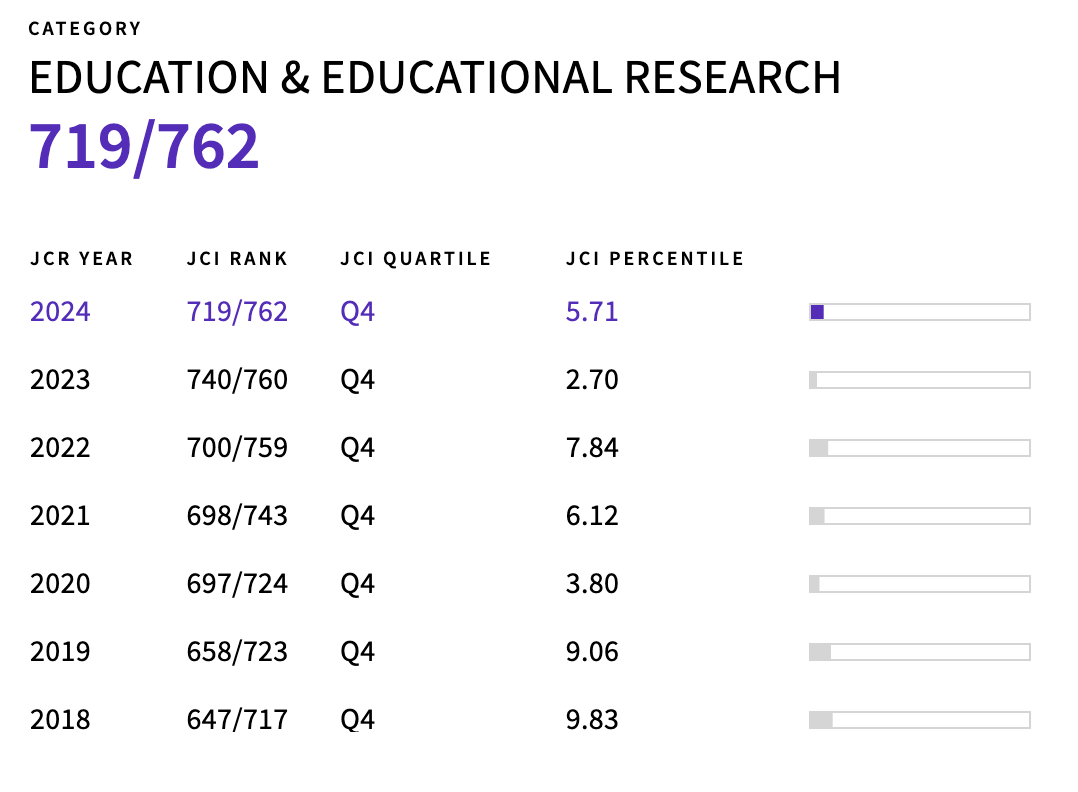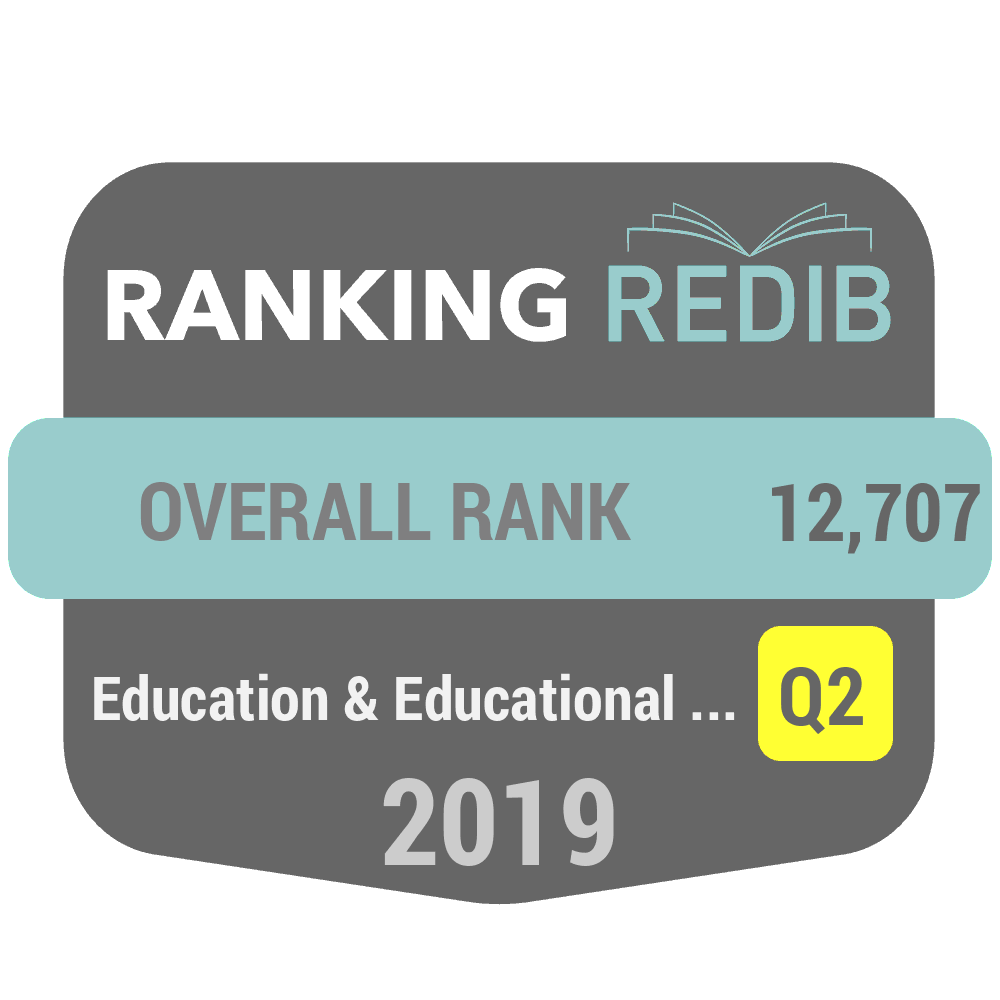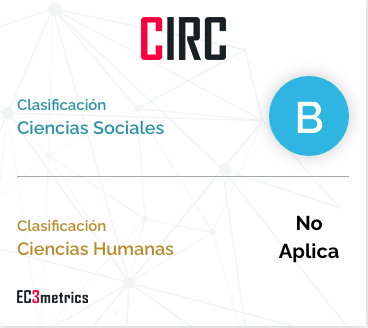Towards a Fuzzy Questionnaire of Felder and Soloman for determining learning styles without dichotomic in the answers
DOI:
https://doi.org/10.55777/rea.v13i25.1853Keywords:
Felder & Soloman Questionnaire, Learning Styles, Felder and Silverman Learning Styles Model, Fuzzy LogicAbstract
The article shows the development and evaluation of the Learning Styles Fuzzy Questionnaire - FuzzyILS, based on the Felder and Silverman Learning Style Model and as an alternative fuzzy to the ILS Questionnaire created by Felder and Soloman. The FuzzyILS was created as an alternative to the limitation described by students who answered the ILS Questionnaire in previous research and they indicated that the dichotomy of the answers limited them to express their answers. The FuzzyILS has 5 options for each question then we calculate the degrees of membership in the fuzzy sets of the dimensions. Finally, the work shows the FuzzyILS evaluation, carried out in three phases, the first with 132 people in 5 universities in Venezuela and Brazil, the second evaluation with 180 students from the Central University of Venezuela and the third an internal consistency evaluation based on the Cronbach's alpha value.
Downloads
References
Bandler, R. & Grinder, J. (1982). De sapos a príncipes. Editorial Cuatro Vientos.
Brito-Orta, M.D. & Espinoza-Tanguma, R. (2015). Evaluación de la fiabilidad del cuestionario sobre estilos de aprendizaje de Felder y Soloman en estudiantes de medicina. Investigación en Educación Médica, 4(13), 28-35.
Díaz-Barriga, F. & Hernández. G. (2010). Teaching strategies for meaningful learning. 3ªEd. México: McGraw-HILL.
Dunn, R. & Dunn, K. (1974). Learning style as a criterion for placement in alternative programs. Phi Delta Kappan, 56(4), 275-278.
Felder, R. & Silverman. L. (1988). Learning and Teaching Styles in Engineering Education. Engr. Education. 78(7), 674-681. Retrieved from http://www4.ncsu.edu/unity/lockers/users/f/felder/public/Papers/LS-1988.pdf.
Felder, R. & Soloman, B. (2007). Index of Learning Styles. Retrieved from http://www.engr.ncsu.edu/learningstyles/ilsweb.html.
Felder, R.M. & Spurlin, J. (2005). Applications, Reliability and Validity of the Index of Learning Styles. International Journal of Engineering Education, 21(1), 103-112.
Felkel, B. H. & Gosky, R. M. (2015). A study of Reliability and Validity of the Felder-Soloman Index of Learning Styles for Business Students. Retrieved from http://archives.math.utk.edu/ICTCM/VOL24/C004/paper.pdf.
García Cué, J., Santizo Rincón, J. & Alonso García, C. (2009). Uso de las TIC de acuerdo a los estilos de aprendizaje de docentes y discentes. Revista Iberoamericana de Educación de la Organización de Estados Iberoamericanos para la Educación. la Ciencia y la Cultura (OEI), (48)2. Retrieved from http://www.rieoei.org/deloslectores/2308Cue.pdf.
Gardner, H. (1983). Frames of Mind: The Theory of Multiple Intelligences. New York: Basic Books, Division of Harper Collins Publishers.
Herrmann, N. (1982). The Creative brain. NASSP Bulletin, 31-45.
Herrmann, N. (1990). The Creative Brain. Brain Books, Lake Lure, North Carolina.
Honey, P. & Mumford, A. (1986). The Manual of Learning Styles. Maidenhead, Berkshire: P. Honey, Ardingly House.
Kirschner, P. (6 de marzo de 2017). Dejad de propagar el mito de los estilos de aprendizaje. Retrieved from https://culturacientifica.com/2017/03/06/dejad-propagar-mito-los-estilos-aprendizaje/
Kline, P. (1993). Personality, The Psychometric View. London, Routledge.
Kolb, D. (1976). The Learning Style Inventory: Technical Manual, Boston, Ma.: McBer.
Litzinger, T.A., Lee, S.H., and Wise, J.C. (2005). A Study of the Reliability and Validity of the Felder-Soloman Index of Learning Styles. Proceedings of the 2005 ASEE Annual Conference, ASEE.
Livesay, G., Dee, K., Nauman, E. & Hites, L. (2002). Engineering student learning styles: a statistical analysis using Felder’s Index of Learning Styles. 2002 Annual Conference of the American Society for Engineering Education, Montreal, Quebec, Canada.
Ossandón, Y. & Castillo. P. (2006). Propuesta para el Diseño de Objetos de Aprendizaje. Revista Facultad de Ingeniería. Universidad de Tarapacá, 14(1), 36-48.
Paredes, P. (2008). Una Propuesta de Incorporación de los Estilos de Aprendizaje a los Modelos de Usuario en Sistemas de Enseñanza Adaptativos. Tesis doctoral. Universidad Autónoma de Madrid. Departamento de Ingeniería Informática. Madrid. España. 2008. Retrieved from http://arantxa.ii.uam.es/~pparedes/tesis.pdf.
Popescu, E., Badica, C. & Moraret, L. (2010). Accommodating Learning Styles in an Adaptive Educational System. International Journal of Computing and Infomatics, 34, 451–462. Retrieved from http://www.informatica.si/PDF/34-4/06_Popescu-Accommodat-ing%20Learning%20Styles%20in%20an%20Adaptive%20Educational%20System.pdf.
Renes. P., & Martínez Geijo, P. (2016). Una Mirada a los Estilos de Enseñanza en Función de los Estilos de Aprendizaje. Revista de Estilos de Aprendizaje 9(18), 224-243. Retrieved from http://revistaestilosdeaprendizaje.com/issue/view/84/10.
Silva Sprock, A., Ponce Gallegos, J.C. & Villalpando Calderón, M. (2014). Development Model of Learning Objects Based on the Instructional Techniques Recommendation. International Journal of Learning, Teaching and Educational Research. 4(1), 27-35. Retrieved from http://www.ijlter.org/index.php/ijlter/article/view/42/pdf.
Silva Sprock, A. & Ponce Gallegos, J.C. (2015). Evaluación del método para el desarrollo de objetos de aprendizaje basado en estilos de aprendizaje: MeLOTS. Revista Tecnológica ESPOL-RTE, 28(5), 39-53. Retrieved from http://rte.espol.edu.ec/index.php/tecnologica/article/view/424/290.
Silva Sprock, A. (2018). Conceptualización de los Modelos de Estilos de Aprendizaje. Revista de Estilos de Aprendizaje. 11(21). 35-67. Retrieved from http://revistaestilosdeaprendizaje.com/article/view/1088.
Spector, P.E. (1992), Summated Rating Scale Construction: An Introduction, Newbury Park, CA: Sage Publications.
Troiano, H., Breitman, M. & Gete-Alonso, C. (2004). Estilos de aprendizaje que predominan entre los estudiantes universitarios. Revista de Enseñanza Universitaria, 23, 63-82.
Van Zwanenberg, N., Wilkinson, L.J., & Anderson, A. (2000). Felder and Silverman’s Index of Learning Styles and Honey and Mumford’s Learning Styles Questionnaire: how do they compare and do they predict academic performance? Educational Psychology, 20(3), 365-380.
Witkin, H. A. (1964). Origins of cognitive style. In C. Sheerer (Ed.), Cognition: Theory, research, promise. New York: Harper & Row.
Witkin, H. A. & Goodenough, D. R. (1981). Cognitive styles: Essence and origins. New York: International Universities Press.Zadeh, L. A. (1965). Fuzzy Sets. Information and Control, 8. 338-353.
Zywno, M.S. (2003). A Contribution to Validation of Score Meaning for Felder Soloman’s Index of Learning Styles. Proceedings of the 2003 ASEE Annual Conference, ASEE.
Downloads
Published
How to Cite
Issue
Section
License
By submitting the original, the author(s) declare that they are aware of and accept, in full, the privacy policy as well as the copyright of the Learning Styles Magazine.
The Learning Styles Magazine offers free and open access to its content, completely free of charge, in order to bring scientific research to its readers and society in general. All digital contents are free and open access and are published under a Creative Commons license:

Rights are granted under the Creative Commons Reconocimiento-NoComercial-SinObraDerivada 4.0 Internacional (CC-BY-NC-ND 4.0)
The Learning Styles Magazine is an open access journal. Publication of articles or reviews in the Journal does not entitle you to any remuneration. For authors as well as readers, the journal is free Creative Commons Reconocimiento-NoComercial-SinObraDerivada 4.0 Internacional (CC-BY-NC-ND 4.0).
With this licence, the reproduction and dissemination of the contents of the magazine for educational, social and knowledge transmission purposes is permitted, without any profit motive in mind, provided that the source and authorship are not modified. The licence granted to Learning Styles Magazine allows the copying and distribution of the magazine's contents, as long as the authorship of the work is recognised, correctly specifying the author and the publishing entity. The work may not be used for commercial purposes, nor may it be altered, transformed or generated from this work.
The publication of articles or reviews in the Journal does not give the right to any remuneration.
The Learning Styles Journal invites the author/authors to increase the visibility and scope of their articles published by re-disseminating them in:
- Web spaces and personal networks, as well as in scientific meetings and forums
- Open institutional archives in Universities, educational repositories and Research Centres.
- Academic and scientific networks (Researchgate, Academia.edu, Plubons, etc.)
All these spaces and publications must include all the bibliographic data of the publication.

